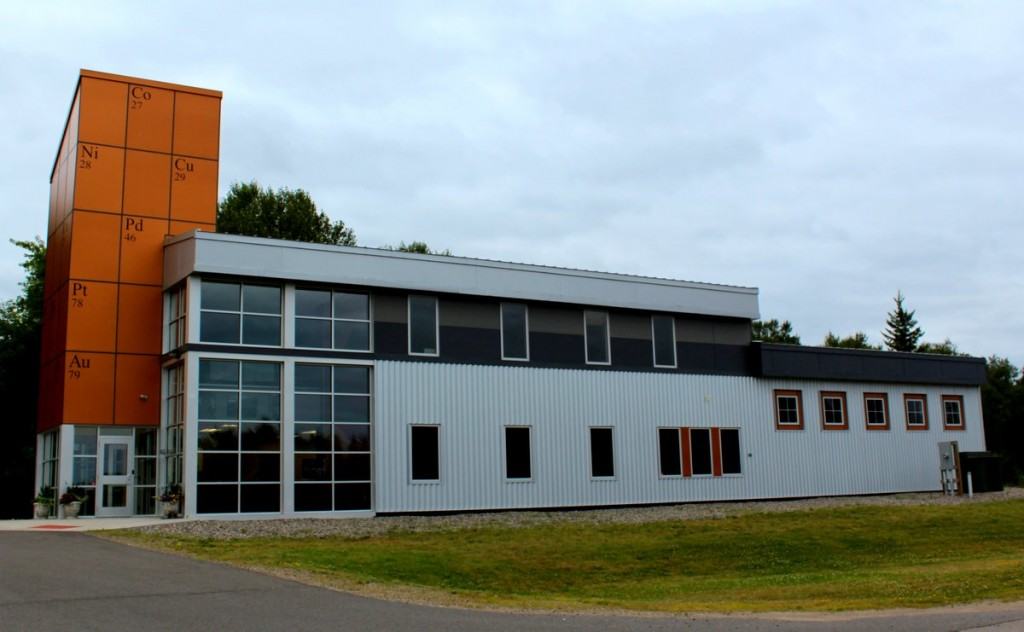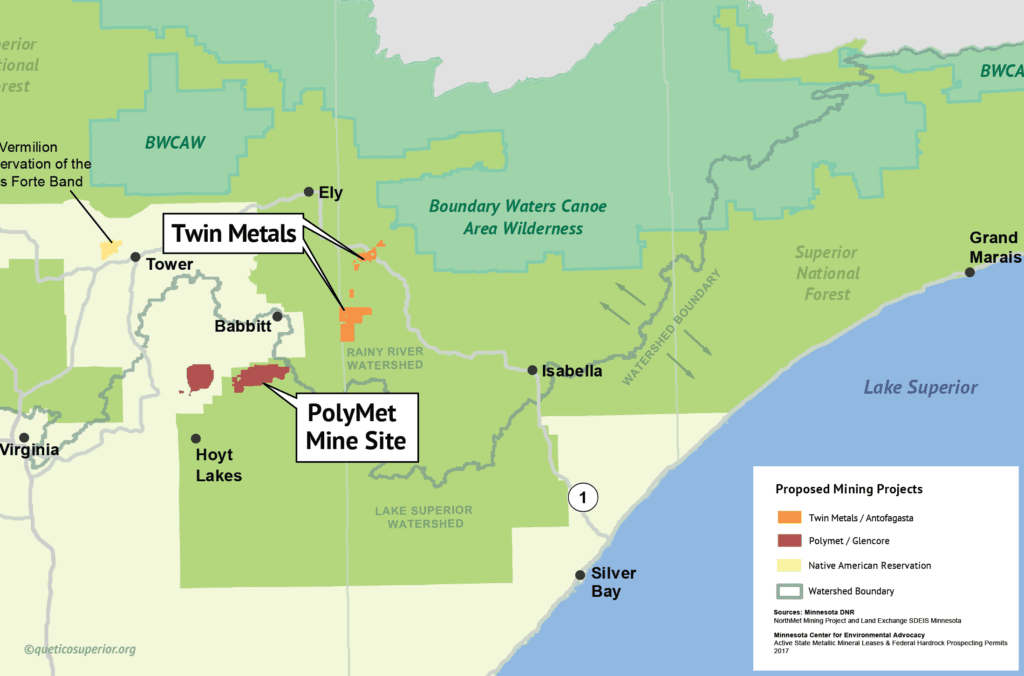
The mining company seeking to open a controversial copper-nickel mine near the edge of the Boundary Waters Canoe Area Wilderness announced yesterday it will seek to use “dry stacking” for its mine tailings. Twin Metals, which is owned by Chilean company Antofagasta PLC, says the technique is safer than using dams to hold back ponds full of waste. Dry stacking is favored by some environmental groups but questions persist.
Tailings are the large quantities of waste left over after ore is crushed and valuable minerals are extracted.
Some environmental groups have praised the method before, and others state that the mine would still represent a serious risk to the Boundary Waters and all lakes and rivers downstream of its operation.
‘Best available technology’
Twin Metals previously proposed storing its tailings in ponds held back by earthen dams. That traditional technique is blamed for several deadly disasters in recent years at mines around the world. The company says about half its waste will be stored back in its underground mine after it is closed.
“Because there’s no risk of a dam failure, dry stack is considered the best available technology for tailings storage and, after a decade of study and consultation with concerned voices in our community, we determined that it will be an effective choice for our project,” said Kelly Osborne, chief executive officer of Twin Metals Minnesota.
The company claims dry stack tailings are currently used at “four mines in the northern United States and Canada with similar climates to Minnesota.” It has also been permitted at two mines in the American West. A spokesperson for Twin Metals told the Duluth News Tribune that the company has been considering dry stacking for several years, especially considering it is becoming an industry standard.
The plan calls for tailings the consistency of “sand castle sand,” to be stored near the processing plant. The stack will be drained to collect and reclaim moisture from the tailings. The tailings will be stacked to an average of about 120 feet high, which the company calls “consistent with the topography of the area.”

Concerns continue
Environmental groups and Ojibwe tribes have criticized the nearby PolyMet mine project for its plan to use ponds and dams, as similar methods have caused catastrophic incidents elsewhere. Earlier this year, legislation was introduced to require dry stacking in Minnesota, as it is in Montana.
The Department of Natural Resources has previously said that dry stack tailings may not be feasible in a wet climate like Minnesota. The agency used that justification in response to PolyMet’s proposal. They say rain and snow falling on dry stacked tailings can quickly cause dangerous drainage.
“In a wet climate, dry stacking has major environmental disadvantages,” agency staff wrote in its “Findings of Fact” on PolyMet’s dam safety permit, issued Maintaining dry stacked tailings as ‘dry’ in areas with substantial precipitation and/or a high water-table is difficult. Once exposed to rain or snow, the dry stack becomes wet, so most of the benefits of dry stacking are lost. Dry stacked tailings that become wet again (but are not submerged) are subject to oxidization and leaching of heavy metals. As precipitation then intermittently washes through the tailings, those heavy metals and other constituents may be washed into surrounding soils and nearby water bodies.”
It also said dry stacking was not best for PolyMet because the technique would require developing a new storage site, rather than reusing existing taconite tailings basins.
Mine opponents responded to the Twin Metals announcement with caution and criticism. Environmental groups pointed out that Twin Metals’ previous plans would have at least transported the tailings out of the wilderness watershed. The dry stack tailings would be located closer to the mine, near lakes and rivers that drain toward the Boundary Waters.
“Dry stacking of mine tailings is preferable to storing mine waste and polluted water behind a dam, though it alone does not make a mine proposal ‘environmentally friendly,'” said Kathryn Hoffman, Chief Executive Officer of the Minnesota Center for Environmental Advocacy. “Antofagasta’s announcement does show that PolyMet was wrong when they said a dam was needed to store liquid mine waste at their proposed copper-nickel mine just 12 miles away.”
The group says the Twin Metals mine poses several threats to water and other natural resources, and MCEA will evaluate all risks.
Still unacceptable to some
While PolyMet’s plan would discharge the tailings in slurry form into large basins held back by earthen dams, Twin Metals’ plan would remove most of the moisture and pile the waste on liners.
Other advocates said the decision doesn’t change the fact that a copper mine would be located in the wilderness watershed.
“Antofagasta’s Twin Metals project should never have gotten this far,” said Save the Boundary Waters National Chair Becky Rom. “The U.S. Forest Service unequivocally concluded in 2016 that sulfide-ore copper mining posed an unacceptable risk to the Boundary Waters, America’s most popular Wilderness. This conclusion has never been refuted.”
The Forest Service’s 2016 conclusion was documented in a letter from the agency’s leader at the time, Tom Tidwell. Writing to the chief of the Bureau of Land Management, Tidwell said his agency opposed the renewal of mineral leases for Twin Metals on the Superior National Forest. The rejection of the leases was later reversed by the Trump administration.
The proposed mine has not entered the formal environmental review or permitting stage yet, with this announcement marking a significant development in its design.

More information:
- Twin Metals to use environmentally friendly dry stack tailings at copper-nickel mine planned in Minnesota – Twin Metals
- Twin Metals changes its plan to deal with mine waste — to a strategy lauded by some environmentalists – MinnPost
- Twin Metals pitches new method of storing waste at proposed mine near BWCA – MPR News
- Dry Stack Tailings Storage 101 – Twin Metals
- Dam Safety Permit, PolyMet’s NorthMet Mining Project – Minnesota DNR

